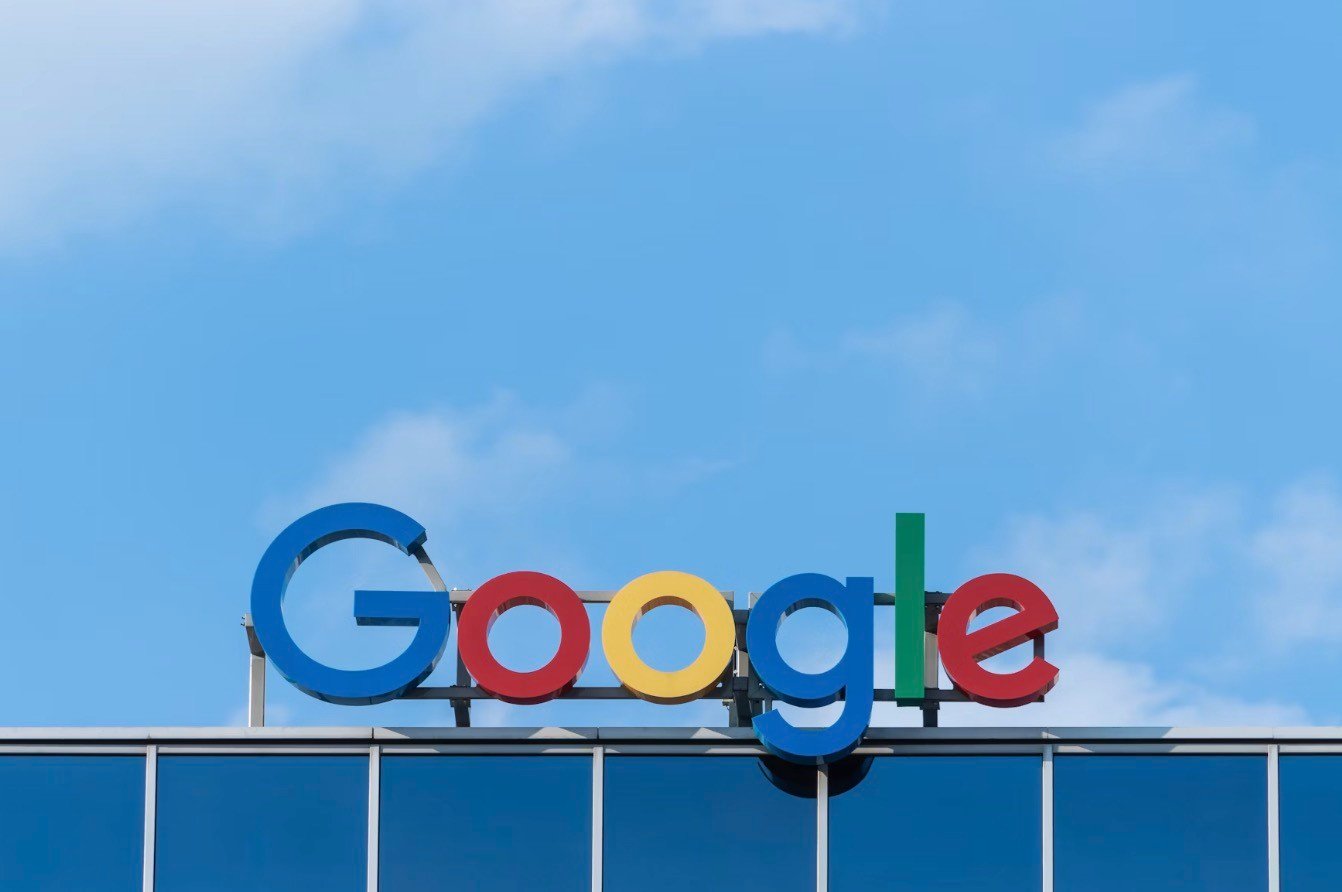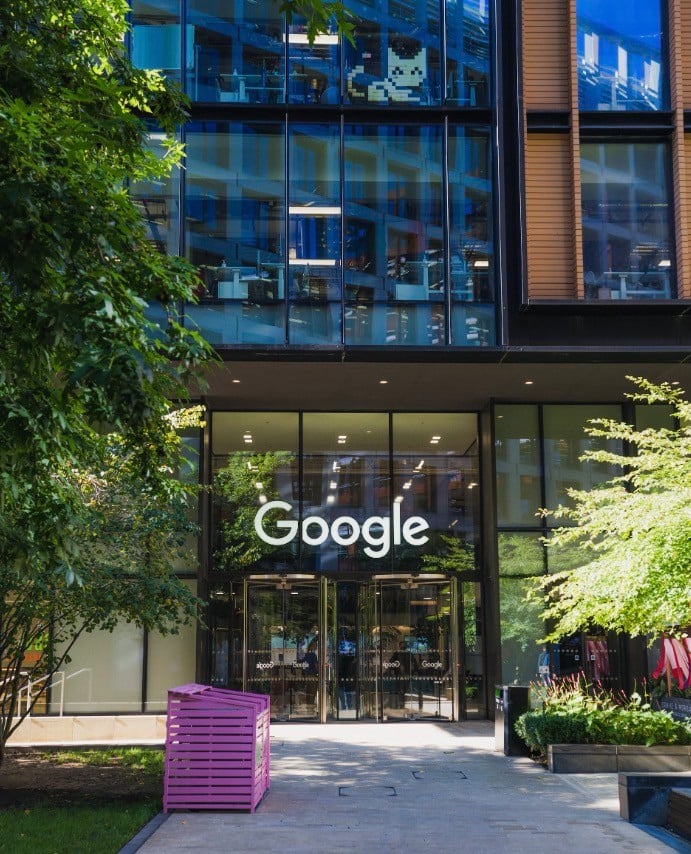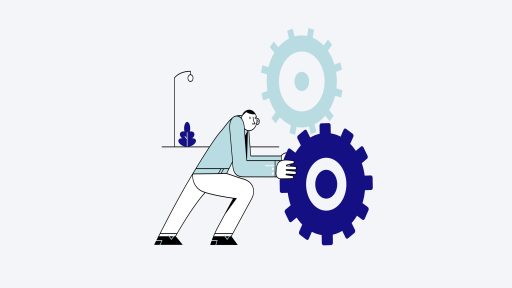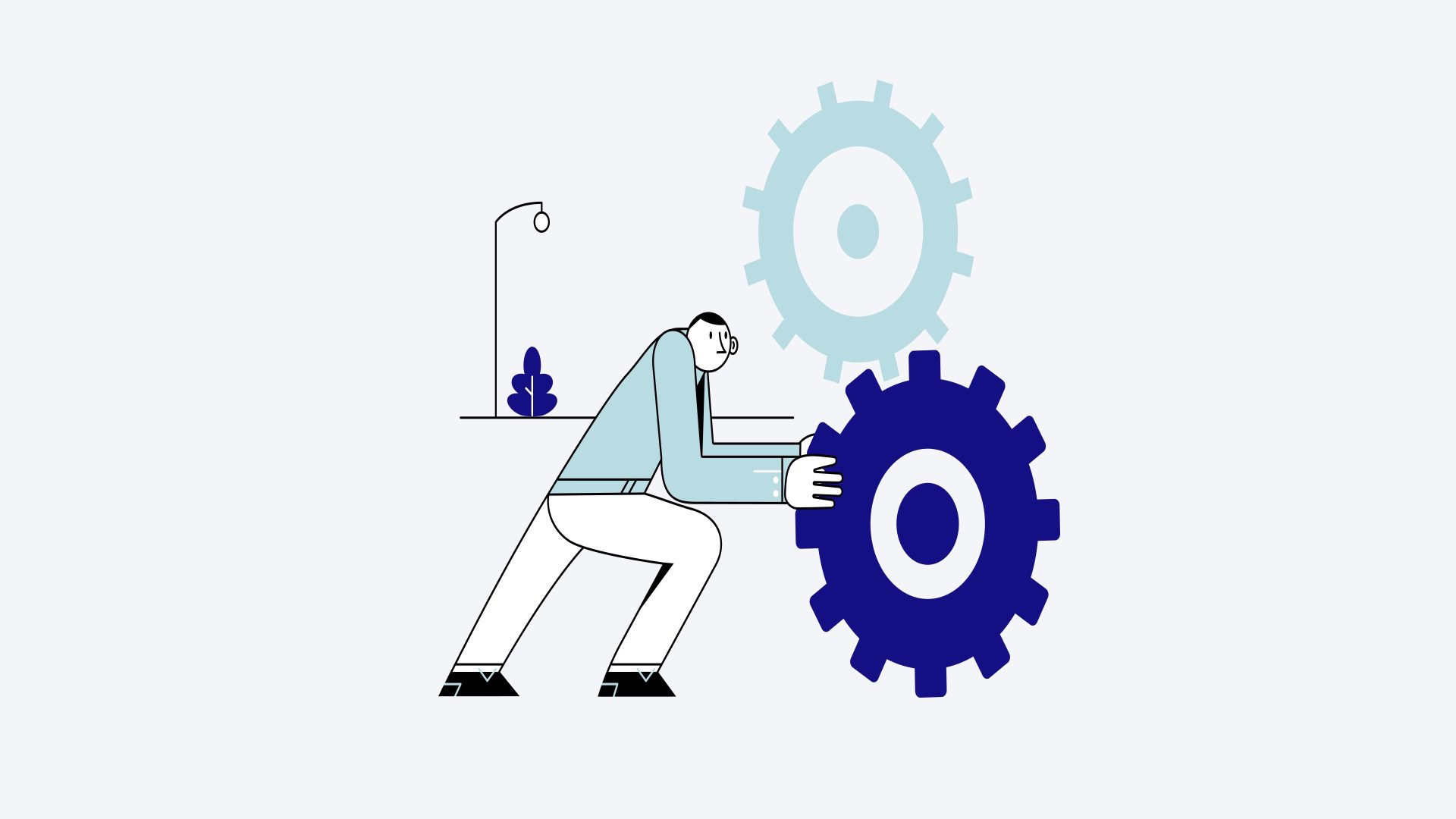Google’s secret algorithm exposed via leak to GitHub…

The recent unveiling of Google’s algorithmic intricacies through their API has caused a stir in the SEO community, eliciting a range of emotions (“Google claimed X, but it’s actually Y!”) and exposing truths that could potentially reshape how we optimize our clients’ websites for search engine visibility in the future and offer our SEO solutions holistically.
Comprising a myriad of features and modules, these documents offer a rare peek into the inner mechanisms of Google’s ranking algorithms, empowering SEO professionals to fine-tune their strategies with unparalleled precision. This now permits marketers to align their efforts more closely with the specific criteria utilized by Google to rank online content.
The insights challenge longstanding beliefs and substantiate suspicions concerning how Google appraises and ranks web content. This newfound knowledge equips us to adapt fresh approaches and techniques to foster enhanced visibility and superior performance on search engine results pages (SERPs).
I am eager to assist in distilling the extensive information gleaned from Google’s ranking systems API documentation, or commonly sought after, the Google search algorithm leak, into actionable insights. Nevertheless, it is imperative to view this information with caution until the exact significance of these ranking signals is clarified. By encapsulating key findings, my aim is to grant SEO professionals and digital marketers with a (albeit cautiously nuanced) strategy for optimizing their websites in adherence to Google’s actual practices.
Let’s explore what discoveries await!
Google’s Algorithmic Secrets
The revelations from the Google algorithm leaks (technically, API leaks) unveiled over 14,000 characteristics and ranking indicators utilized in their search platform. Confirmed by Google (albeit somewhat surprisingly), these documents offer insights into varying aspects of search ranking, ranging from different PageRank iterations to user interaction measurements.
This trove of information includes explicit metrics and ranking elements that were previously concealed, misrepresented, repudiated, or misunderstood, endowing us with a slightly clearer comprehension of how Google ranks webpages.
Exciting times ahead!
PageRank Variants
Google employs diverse forms of PageRank, each serving a distinctive purpose within its ranking structure.
PageRank_NS (Nearest Seed) stands as a modified rendition of the traditional PageRank algorithm, tailored to concentrate on document understanding and clustering. This variant aids Google in evaluating the significance of pages within precise content clusters and proves beneficial in categorizing substandard pages or niche subjects.
Through the process of clustering and pinpointing underperforming pages, PageRank_NS empowers Google to evaluate their relevance and impact on the overall quality of your site more accurately. In instances where your website harbors outdated or inadequately performing content pieces, PageRank_NS facilitates Google in distinguishing them from your top-notch content, potentially mitigating any detrimental effects on your site’s rankings.
Please disregard my “digital marketing during the COVID era” articles, Google!
Grasping the essence of PageRank_NS opens avenues for creating more interrelated and focused content structures. For instance, if you curate a blog concentrating on “healthy snacks,” it’s vital to ensure your content is interconnected and pertinent to other subtopics like “nutrition” and “on-the-go meals” to leverage the potentials of PageRank variations. This strategic approach boosts visibility in search outcomes and establishes the content as an authoritative figure within the specific niche.
The crux is to strategically interlink related content while upholding high standards across all pages.
Furthermore, the traditional Toolbar PageRank, once visibly displayed for webmasters, still exerts a subtle influence on webpage rankings. Despite Google officially discontinuing the release of Toolbar PageRank data in 2016, leaked documents hint at the continued role of PageRank variations such as “rawPagerank” and the cleverly named “pagerank2” in Google’s internal ranking strategies.
Moreover, the leak discloses a methodology labeled “NavBoost” (more details on that later), which harnesses information from different sources including the deprecated Toolbar PageRank and click data sourced from Google Chrome, to mold search rankings. This revelation contradicts Google’s prior public statements regarding the utilization of Chrome data for ranking purposes.
My beliefs have been shattered!
The documents also suggest that Google stratifies links into distinct quality tiers, with click data dictating the tier and thereby influencing PageRank flow and search result rankings.
Although Toolbar PageRank may no longer be a publicly accessible metric, its legacy continues to resonate profoundly within Google’s internal systems, shaping the dynamics of how links and user interactions impact search outcomes.
Site-Wide Authority Metrics
Site-wide authority metrics constitute potent signals that Google leverages to appraise the comprehensive quality and pertinence of an entire website rather than individual pages alone. These metrics facilitate Google in discerning the authoritative and dependable stance of a website concerning specific topics, thereby influencing its search result rankings.
Contrary to Google’s public rebuttals, the leaked documents affirm the existence of a metric named “siteAuthority” (“See? I told you we don’t utilize ‘domain authority’!!“). This metric gauges the authority or significance of a website in particular subjects and plays a pivotal part in dictating search rankings.
siteAuthority is an integral component of a broader system that evaluates the overall quality of a website, analyzing factors such as content quality, user engagement, and link patterns.
Another notable metric unveiled in the leak is the Host NSR (Host-Level Site Rank), which computes site-level rankings based on different segments or “chunks” of a domain. This metric underscores the importance of perpetuating high-quality content across all facets of a website. Host NSR evaluates the standard and relevance of diverse site segments and endeavors to ensure that the entire domain aligns with Google’s benchmarks for authority and reliability.
Fascinatingly, the leaked documents also indicate that Google leverages Chrome browser data to evaluate site-wide authority. This encompasses metrics like user engagement and site popularity, aiding Google in evaluating the overall quality of a website. This revelation contradicts Google’s previous declarations concerning the non-utilization of Chrome data for ranking decisions, highlighting the pivotal role of user interaction data in assessing site authority.
For instance, if your tech blog attracts a substantial Chrome user base, it is likely to be deemed as more authoritative. Hence — pursue that avenue!
These metrics accentuate the significance of preserving a coherent thematic focus and ensuring that all content aligns with the overarching themes and objectives.
Critical Components of Google’s Algorithm
NavBoost
The fascinatingly titled NavBoost leverages click data from Google Chrome to ascertain a webpage’s significance. It incentivizes pages that generate more and superior clicks.
As an illustration, if you are tasked with crafting and overseeing a well-organized e-commerce platform that effectively directs users to purchase pages, you will observe enhanced rankings (and probably more praise from your client).
To captivate NavBoost’s attention towards your website, concentrate on enhancing user engagement metrics, such as click-through rates (CTR) and duration spent on page (known as “Dwell Time”). Ensure that your pages are crafted to captivate and retain user attention proficiently.
By designing user-friendly navigation and clear, compelling calls to action, you can optimize your click performance and thus enhance your rankings through NavBoost.
NSR
NSR (Neural Search Ranking) plays a pivotal role in Google’s algorithm by employing machine learning to comprehend the context and relevance of web content. This sophisticated system aids Google in interpreting the lexical significance behind the text, which facilitates more precise and contextually suitable search outcomes.
Imagine creating an extensive guide on “Exploring the Historic Sites of Rome,” incorporating historical context, visitor suggestions, nearby dining options, and personal anecdotes from travelers. NSR evaluates your content to gauge its pertinence based on keyword matching and how well it serves user queries regarding exploring Rome.
The efficacy of NSR implies that merely loading an article with keywords is insufficient; your content must be detailed, well-structured, and semantically resonant. If another website releases a similar article but incorporates a broader range of details, such as interactive maps, video tours, and updated visitor feedback, NSR will likely prioritize this content due to its comprehensive nature and heightened utility for users.
Emphasize producing content that is not only optimized for keywords but also deeply pertinent and captivating. This will enrich the overall user experience and align with the nuanced criteria of Google’s neural search capabilities.
This echoes what Google often emphasizes without specific details: “Create high-quality content”.
ChardScores
ChardScores forecast site and page excellence based on content and underscore the importance of sustaining “excellence” throughout your site. These scores encompass various metrics, including user engagement and content profundity, to present a holistic assessment of a site’s quality. Just as chard is a versatile and nutritious vegetable, “ChardScores” might symbolize a versatile and all-encompassing metric that appraises numerous facets of a web page’s quality and relevance.
A high ChardScore signifies a meticulously managed site with invaluable content, which logically leads to superior performance in search rankings.
For instance, envision managing a financial news platform that posts daily updates on stock markets, insightful analyses of economic patterns, and comprehensive interviews with industry specialists. Each article is thoroughly researched and complemented with interactive graphs, high-resolution visuals, and videos of market experts elaborating on intricate concepts. This sort of content holds users’ attention for longer durations, promotes sharing, and draws high-quality backlinks.
Consequently, your site upholds high user engagement and content profundity metrics, contributing to an elevated ChardScore. Subsequently, this indicates to Google that your site is credible and valuable, enhancing its search rankings.
By consistently delivering such top-notch content, you guarantee that your financial news site satisfies and surpasses the standards gauged by ChardScores, consequently enhancing its overall visibility and credibility in search outcomes.
Once again, this mirrors Google’s familiar advice: “Create high-quality content”.

An idle content marketer letting AI compose his content, and Google might not approve of this.
Page Quality (PQ)
PageQuality (PQ) employs an extensive language model (LLM) to assess the “effort” invested in generating content. Factors like tool utilization, images, videos, and unique information contribute to elevated PQ scores. This also hints at the potential utilization of “AI detection” technologies.
Naturally, if AI crafted your article, perhaps your effort was lacking, right, Champion?
An exhaustive, human-created (non-AI-generated) tutorial on DIY home enhancement, accompanied by unique instructional videos and exclusive images, will attain a high PQ score, suggesting it offers substantial value to users.
This evaluation underscores the necessity for content that answers user inquiries comprehensively, engagingly, and distinctively, setting it apart from other pages.
Image and Content Quality
Image Quality Signals
Google gauges image quality through indicators like usefulness, presentation, and engagement, referred to as ImageQualityClickSignals. High-quality, authentic images that are aesthetically pleasing and augment the content’s value can elevate rankings.
For instance, if you operate a fashion blog, include distinct, attractive images of apparel items that complement the content. Such action will likely enhance your blog’s performance in search outcomes.
You should prioritize not only including original images, but also their quality and relevance to the accompanying text, ensuring they contribute meaningful value to the user’s experience. Engrossing images that complement the content aid in retaining users on the page longer and can result in heightened engagement metrics, positively impacting rankings.
Content Update and Freshness
Consistent content updates are crucial for preserving its pertinence and search ranking. Google utilizes systems like SegIndexer and TeraGoogle to emphasize content based on update frequency.
SegIndexer appears to be responsible for categorizing web pages into tiers predicated on factors such as quality, relevance, and freshness. This tiered system enables Google to prioritize the most crucial and pertinent documents, ensuring users receive optimal results for their queries. By streamlining the search process, SegIndexer assists Google in providing swift and precise search outcomes.
Supplementing SegIndexer is TeraGoogle, a secondary indexing system devised for the prolonged storage on physical hard drives(!) of infrequently accessed documents. TeraGoogle guarantees that even less sought-after documents remain indexed and retrievable. By offloading the storage of these documents, TeraGoogle aids in optimizing Google’s primary index’s performance and efficiency.
In case I induced drowsiness, let’s simply state your SEO plan should encompass periodic update efforts to—
reviews and revisions of current content. This aligns with my past encounters: it appears more straightforward to “rejuvenate” a previously ranking article than to start from scratch and have it rank.
For instance, if you oversee a finance advisory blog, it would be prudent to update your writings to mirror the latest market movements and regulatory updates (this can even be automated). This practice maintains the relevance of the content and communicates to search engines like Google that your website is actively managed and up-to-date, which is a key factor for ranking.
Enhancing content indicates a devotion to offering the most up-to-date data, bolstering your site’s authenticity and dependability.
Managing Site Content and Structure
Host NSR and Delcious Site Chunks
Host NSR calculates website ranking using segments of your site, tracking clicks and impressions across the site. This method highlights the significance of maintaining consistent excellence across all parts of your website.
As an illustration, for a news website, ensure premium journalism and pertinent updates in every category, from sports to politics, to enhance your overall site ranking. By concentrating on coherent, top-notch content throughout your site, you elevate the cumulative metrics that contribute to better rankings.
Implementing a content strategy that assures every segment of your website delivers value can notably enhance your site’s overall performance in search rankings.
Removing Low-Performing Pages
Spotting and eliminating pages with subpar performance metrics (commonly referred to as Content Pruning), such as low user engagement and lack of backlinks, can uplift your site’s overall quality.
For instance, if you supervise an online magazine, conduct periodic content audits and delete outdated or irrelevant articles with low traffic attraction. This process aids in upholding a high level of content quality throughout your site, ensuring only valuable, engaging pages persist, positively impacting site-wide metrics.
The elimination of low-performing pages also aids in concentrating link equity and user engagement on the top-performing content, further refining your site’s rankings.
Backlinks and Mentions
Toxic Backlinks
The leak substantiates that Google does indeed seem to penalize so-called toxic backlinks. And, as commonly advised, focus on acquiring high-quality backlinks from reputable sources. Tools like Google Search Console can assist in identifying and (at the time of this writing, at least) disavowing harmful links.
If you supervise a health-related website, seek backlinks from respected medical journals, industry resources, and health news websites, circumventing connections from spammy or irrelevant platforms. This approach aids in sustaining a topically-relevant, “clean,” and authoritative link profile, critical for ranking.
Premium backlinks from trusted origins will almost always indicate to Google that your site is trustworthy and dependable, enhancing its ranking potential.
Entity Mentions
Mentions of entities (such as brands or individuals) across the web can influence search rankings similarly to backlinks. These mentions are the specific words or phrases that allude to real-world entities such as people, places, organizations, or concepts. Google uses entity mentions to improve its comprehension of web content and search queries.
When Google detects an entity mention, it correlates it with an immense database of known entities, commonly known as the Google Knowledge Graph. This helps Google disentangle terms and grasp the context better. Through this Knowledge Graph, if you search for “Apple,” Google can ascertain if you are referring to the fruit or the tech giant by analyzing the circumstances in which “Apple” is mentioned.
About stating the obvious, mentions of your brand in industry blogs and news sites can boost your visibility. Endeavor to have your brand highlighted in pertinent and high-traffic websites to enhance your SEO performance.
Public relations representatives, rejoice!
This approach underscores the significance of cultivating a robust online presence and reputation through mentions, which can significantly impact search rankings. Encouraging user-generated content and interacting with industry influencers can aid in amplifying the frequency and quality of these mentions.
Strategic SEO Adjustments Based on Leaks
So what should you do with all this leaked information? Well, it appears that premium, captivating content is more essential than ever. Your content should be visually attractive, regularly updated, and filled with various multimedia elements.
Diversifying content formats and frequently refreshing posts will retain user interest and ensure they return for more.
Maintaining uniformity in page titles, coherent brand NAP (notably the “N”), internal linking, and topical relevance throughout your site is crucial. Consistency aids in constructing a robust, cohesive structure that search engines like Google can easily decipher and rank, reflecting your site’s general topical relevance and influence.
An efficient internal linking strategy enhances navigation and assists in distributing link equity across essential pages, boosting their rankings.
And naturally, acquire links — numerous high-quality, topically pertinent (and geo-relevant, for local enterprises) backlinks.
Leak On, Google
The leaks have potentially provided valuable insights into Google’s ranking factors, accentuating the necessity of comprehending and adjusting our SEO tactics accordingly. Alternatively, it could be an elaborate strategy to divert attention from Google’s often-criticized Search Generative Experience and comically-poor AI Overviews. Your mileage may vary.
Presuming the leak holds truth, ranging from the different PageRank variations and the NavBoost system to the importance of PQ scores and the significance of content excellence and freshness, these revelations illuminate the intricate and evolving nature of Google’s search algorithms.
These revelations serve as a reminder for SEO specialists and digital marketers regarding the imperative need for a proactive and well-informed approach to search engine optimization. At Boomcycle Digital Marketing, we perpetually strive to remain current with the newest developments and integrate any discoveries into our strategies to better position our clients’ websites for Google ranking.
The standard cautionary note is that SEO is a dynamic domain, with solutions today potentially becoming less effective tomorrow. The leaked API underscores the value of continuous learning and adaptation to sustain and enhance search rankings. As Google’s algorithms progress, we must remain informed, test hypotheses, and be ready to experiment with new strategies to maintain a competitive edge.
I urge you to view these leaks as an opportunity to reassess your existing SEO practices and pinpoint areas for enhancement. Embracing a mindset of continuous learning and experimentation will position your organization for success despite the evolving landscape of Google’s algorithms.
If you have inquiries or seek to delve deeper into the implications of these leaks, feel free to get in touch. My team and I are here to support you in navigating the intricate realm of SEO and devising strategies that drive significant outcomes.
About the Author
Erik Chen, founder of Tenten Digital

Unlock the Potential of Your Business 💥 Join us & Experience Unparalleled Growth!


